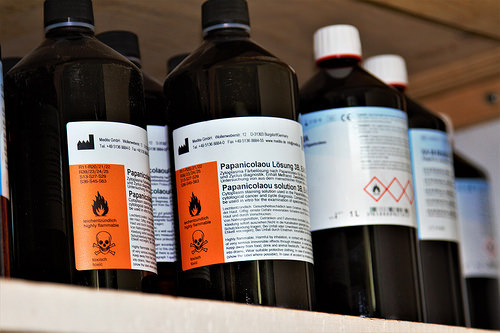On July 1, the US federal Occupational Safety and Health Administration (OSHA) published proposals to revise or repeal more than two dozen of its occupational safety and health standards. OSHA justifies many of these changes as ways to reduce duplicative requirements or increase employers’ flexibility. The remainder of this note identifies these proposals, identifying code sections within OSHA’s General Industry standards (most in 29 CFR 1910 (most proposals also apply to analogous Construction and Maritime standards).
Read MoreAudit, Compliance and Risk Blog
Tags: Health & Safety, OSHA, Compliance Safety, RegulatoryUpdates, Workplace Safety Guidelines, Risk Management, Safety Standards, EHS Compliance
The US federal Occupational Safety and Health Administration (OSHA) conducted its twelfth annual “National Safety Stand-Down to Prevent Falls in Construction” during May 5-9, 2025. The Stand-Down focused on fall hazards and fall prevention, emphasizing safety demonstrations, trainings and hazard recognition activities. Falls are a leading cause of workplace injuries and deaths in construction, and can also be important hazards in non-construction locations where workers use ladders or work in elevated locations. The remainder of this note summarizes approaches to fall hazards and fall protection.
Tags: Health & Safety, OSHA, Safety and Health at Work, workplace safety, Cal/OSHA, Injury, Safety Regulations, Worker Safety, Risk Management, Fall Prevention
Department of Labor reports fewer occupational injuries, illnesses, and deaths last year
Posted by Jon Elliott on Wed, Mar 26, 2025
The US Bureau of Labor Statistics (BLS) compiles data about occupational injuries and illnesses (I&I), and issues annual reports about occupational injuries, illnesses and fatalities. BLS cooperates with Occupational Safety and Health Administration (OSHA) requirements that employers record occupational I&I as they occur, and compile annual I&I logs to inform workers and regulators of overall rates. BLS issued its report for calendar year 2023 in December 2024, highlighting causes and distributions of workplace deaths, and noting that they were lower than in 2022. The rest of this note summarizes how these occupational incidents are reported and counted.
Read MoreTags: Health & Safety, OSHA, EHS, Safety and Health at Work, Injury, Health and Safety Compliance, Workplace Safety Guidelines, Risk Management
WorkSafeBC has amended its regulations to enhance requirements that employers in British Columbia provide first aid in their workplaces. These changes to BC’s Occupational Health and Safety (OSH) Regulation were effective November 1, 2024. The remainder of this note summarizes first aid requirements, highlighting the latest enhancements to direct requirements and to procedural requirements.
Read MoreTags: Health & Safety, Safety and Health at Work, workplace safety, Healthcare, Health and Safety Compliance, WorkSafeBC, OSH
Agencies provide hurricane preparation and response guidance
Posted by Jon Elliott on Fri, Oct 25, 2024
In October, the US Occupational Safety and Health Administration (OSHA) and other federal agencies reacted to hurricanes in the Southeast by re-highlighting existing guidance to support preparation for potential hurricanes, and to respond if one occurs. OSHA’s guidance is directed at employers, the National Oceanic and Atmospheric Administration (NOAA) and the Environmental Protection Agency (EPA) provide more generalized guidance, and the Centers for Disease Control and Prevention (CDC) target families. The rest of this note summarizes this timely information, centering on OSHA’s offerings.
Read MoreTags: Health & Safety, OSHA, Environmental risks, Environmental, Environment, Weather, weather safety, hurricane
OSHA issues safety standards for the design and use of portable powered tools and other handheld equipment items. (29 CFR 1910.242 – 1910.244). These standards focus on safe use of powered hand tools, as well as on safety features such as lock-outs and guards. The standards define general requirements for all equipment defined as powered hand tools, including specific definitions for following: explosive-actuated; fastening tools; abrasive wheels; and jacks. The remainder of this note summarizes these requirements.
Read MoreTags: Health & Safety, OSHA, Safety and Health at Work, workplace safety
New York adopts workplace violence requirements for retailers
Posted by Jon Elliott on Thu, Sep 26, 2024
On September 5, New York’s governor Kathy Hochul signed the Retail Worker Safety Act (A8947-C/S8358-C) to require employers to take steps to protect employees in retail stores from workplace violence (NY Labor Law sec. 27-e). The new law assigns the New York Department of Labor (NYDOL) to develop model policy and training documents for use by employers. Most requirements are effective as of March 4, 2025. These retail workplace violence prevention (WVP) requirements are comparable to public sector employer requirements in place since 2007 (NY Labor Law sec. 27-b), which are also administered and enforced by NYDOL. The rest of this note describes these new requirements.
Read MoreTags: Health & Safety, Workplace violence, Safety and Health at Work, workplace safety, safety violations
While the world adapts to the ongoing presence of COVID-19 and its hazards, other potential pandemic diseases continue to cause concerns. One example is avian influenza, also known as bird flu. In the US, the Centers for Disease Control and Prevention (CDC) and Occupational Safety and Health Administration (OSHA) note that avian influenza H5N1 was first seen in the U.S. in migratory birds in 2015, and in agricultural poultry stock beginning in 2022. Since then, a few mammal infections have been confirmed, and in April 2024, a dairy farm worker tested positive for avian influenza A (H5N1). This history confirms a slow expansion of pathways to infection, and at-risk species extending to include humans. There have not yet been confirmed human-to-human transmissions, which could trigger the next pandemic if they began to proliferate (just as COVID-19 did a few years ago). As these concerns rise, in August 2024 OSHA gathered and updated safety information about Bird Flu, which I summarize below.
Read MoreTags: Health & Safety, OSHA, Safety and Health at Work, workplace safety
On August 30, the Occupational Safety and Health Administration (OSHA) published its proposal to adopt a new Heat Injury and Illness Prevention Standard (29 CFR 1910.148) covering most OSHA-regulated employers. This rulemaking expands OSHA’s ongoing efforts to protect workers against heat hazards; previously, the agency has emphasized that known heat hazards trigger the Employer’s General Duty Clause (I wrote about OSHA’s National Emphasis Program for both outdoor and indoor workplaces HERE ).
Read MoreTags: Health & Safety, OSHA, Safety and Health at Work, workplace safety, Heat, Be Heat Smart
EPA proposes TSCA review of five potential high hazardous substances
Posted by Jon Elliott on Fri, Aug 16, 2024
The 2016 amendments to the Toxic Substances Control Act (TSCA) added procedures for the Environmental Protection Agency (EPA) to evaluate risks presented by existing chemicals using the latest scientific information – including information developed after a chemical entered use in the US. Based on these reviews, EPA is to update its regulatory requirements, ranging from labeling-only through use restrictions up to and including bans from further distribution and use. (I summarized these review requirements HERE ). Beginning in November 2019, EPA regularly announces new chemical reviews, and subsequently the results of these reviews. (I wrote about the first review announcement HERE ). On July 25, 2024 EPA published a formal proposal to review 5 additional chemicals for designation as High-Priority Substance subject to strict controls under TSCA. The rest of this note identifies these proposed chemicals.
Read MoreTags: Health & Safety, Environmental risks, Environmental, EPA, tsca, Hazardous Waste, Environment, Hazardous Chemicals, Hazardous Material










